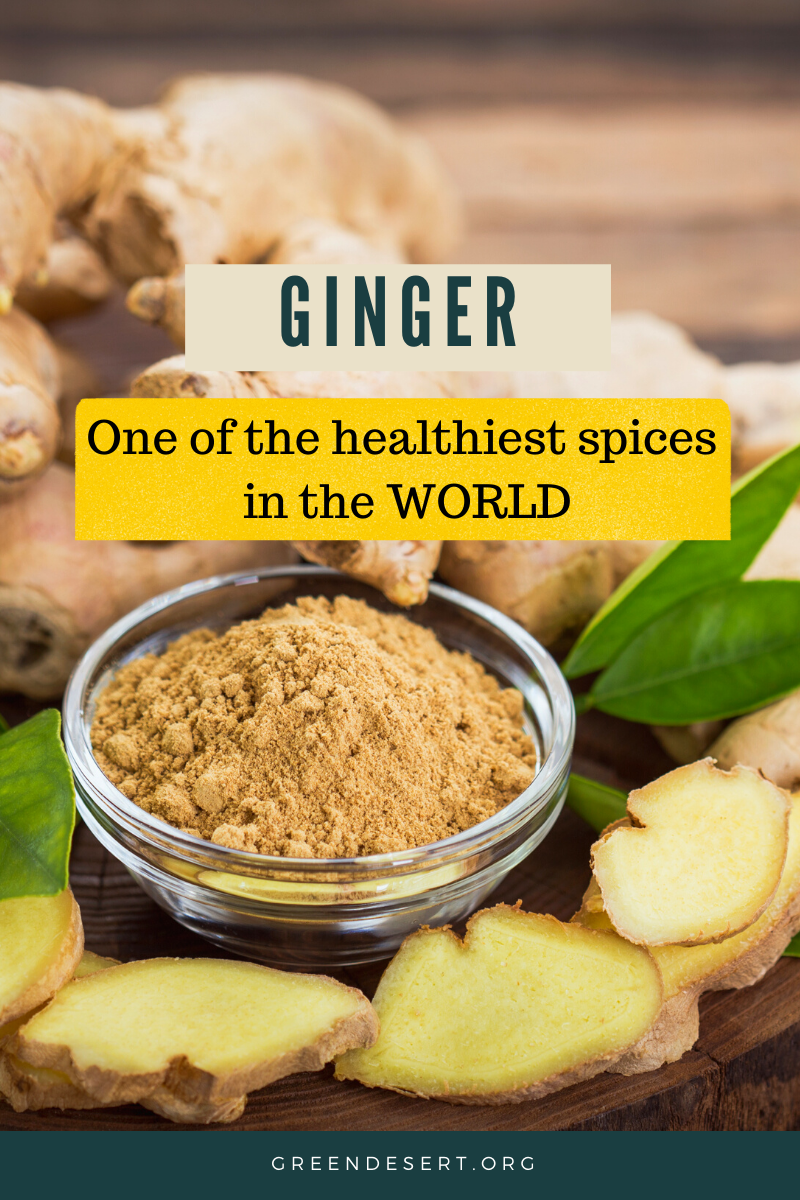WHY YOU’LL WANT TO ADD GINGER TO YOUR MEDICINE CABINET
Most of us have experienced stomach aches, inflammation, and/or menstrual cramps. It can all be painful, frustrating and exhausting. But before you turn to over the counter meds, try GINGER.
It’s one of the healthiest spices you’ll find in the world! In fact it’s been used in cooking and medicine since ancient times and it’s got the stats to back up its healing powers.
Before we go into all of the benefits, let’s talk about its history.
Ginger is technically known as (Zingiber officinale). It’s not the leaves or flowers that attracts most of us, it’s what the plant is hiding underground that will spark your interest because that’s where you’ll find the good stuff… stuff so good that in the 14th century England, a pound of ginger cost as much as a whole sheep. Although many people call it ginger root, it’s technically a rhizome (an underground stem). It has light brown thin skin that requires no peeling and is very tender.
Ginger is a close relative of turmeric and cardamom. It’s native to southeastern Asia and has spread throughout the world. Ancient writings from several countries, including China, Rome and Arab countries all describe ginger as a medicine. The yummy flavor ginger adds to food is just an added benefit.
Its versatility makes it even more popular because there are so many ways to reap its benefits; You can use it fresh, dried, powdered or even as a juice, oil and tea. And with all of its assets, you’ll definitely want to add it to your daily diet.
So let’s talk about the benefits. WARNING… there are tons!
The main ingredient responsible for all of this goodness is called Gingerol. Gingerol has powerful anti-inflammatory and antioxidant effects, which in theory boosts your overall immunity.
The plant is known to be loaded with vitamin C, B6, magnesium, potassium and copper.
Digestive System
Those same healing properties help the digestive system. It warms the stomach. That along with its anti-inflammatory and antibacterial properties aids in healing stomach ailments. That’s why it has such a positive effect on stomach aches, indigestion, nausea, even menstrual cramps are common ailments that ginger helps relieve. It’s actually right up there with pain meds like ibuprofen for its menstrual pain relief.
When I’m feeling nauseous, I start with ginger tea.
It’s even recommended for pregnant women struggling with morning sickness.
Arthritis
Those same antioxidant and anti-inflammatory properties are known to help manage the joint pain of arthritis. In fact, according to the Arthritis Foundation (AF), the chemicals in ginger block inflammation pathways in the body. They suggest taking a maximum of 2 grams of ginger per day, divided into three doses. Another option is to drink up to 4 cups of ginger tea per day.
Cold/Cough/Flu
Some people also use ginger as a home remedy to prevent coughs, colds and flu. The idea is its warming effect helps because it keeps you warm and also helps your body sweat out infections. And we can’t forget all of the antibacterial properties… which may even help sooth a sore throat.
Migraines
If you’ve had migraines, you know nothing seems to help. Some people who suffer from migraines swear by ginger as a way to get relief.
Some say they make fresh ginger tea, others add ginger powder to a few ounces of water, others make a paste or oil and rub it on their forehead.
Weight Loss
Ginger has a very positive effect on obesity and weight loss. Ginger supplementation in particular helps reduce body weight, waist-hip ratio. Ginger’s ability to help increase the number of calories burned or reduce inflammation is a sure way to take off some of those unwanted pounds.
Ginger has so many different uses it’s hard to discuss them all.
It can also fight certain infections and bacteria, and is a useful oral bacterium such as gingivitis and periodontitis.
Bottom-line, there is no denying the miracles of ginger and there are so many ways to use it:
- Making ginger tea
- Adding ginger root or powdered ginger to meals
- Using it in oil or cream form
- Taking it in capsules
- Sucking on lozenges
How do you use ginger? And have you grown it?
See planting instructions below… and a simple recipe to make ginger tea from fresh ginger root (rhizome)!
How to Grow Ginger
Ginger is popularly grown in warmer tropical regions.
You can grow ginger from rhizomes found at grocery stores, farmers markets or simply order them online. The one thing to consider if you use the rhizomes from the grocery store is often stores spray their ginger to keep it from sprouting in the store… so it may not always be consistent. For that reason, I prefer organic growers, although some people say if you soak the grocery store ginger, it will remove the growth retardant.
To start, you want rhizomes (ginger root) that have developed eyes or growth buds. Ideally you want the ginger to have multiple “fingers” extending from it.
- Cut the ginger root into 1-2 inch pieces making sure each piece has at least one eye.
- Let them sit to callous for up to 2 days – similar to potatoes
- Make sure your soil is has lots of organic matter to help with drainage… so add compost. It’s crucial that the soil hold moisture but doesn’t become waterlogged because ginger doesn’t like sitting in water for long periods.
- Ginger likes heat, but not necessarily direct sunlight, so an ideal location would be under the shade of a tree or any place that gets part-day shade or even under shade cloth.
- As for timing, ginger doesn’t like cold, so wait until the temperatures are consistently above 60 degrees – which means in warmer climates like Phoenix, you can pretty much plant any time of the year. March is ideal in Phoenix. (For cooler climates, you can plant in a pot indoors)
- Some people prepare their rhizome by soaking them in water overnight. You can also use the wet paper towel method – wrap your rhizome in a wet paper towel, seal it in a plastic bag and wait for the roots to show up before planting. You can also plant the rhizome directly into the soil.
- Plant each piece of the rhizome 12 inches apart, one inch deep. Make sure the healthiest looking eyes face upward.
- Water the rhizomes deeply immediately after planting.
- As your rhizomes grow and multiply, keep adding soil. Remember, ginger is innately a tropical plant, so don’t let the soil get too dry.
- Your ginger plant will eventually grow up to 4 feet tall.
- It’ll take up to 10 months before you can start harvesting, and the older it is, the better the flavor.
How to make fresh Ginger Tea in 10 minutes
What you’ll need for 4 servings:
- Fresh Ginger Root sliced thin – 2 slices per cup (You can freeze leftover ginger root)
- 4 cups of water
- Lemon (optional – 1-2 slices per cup)
- Sweetner (optional – I use 1 tablespoon of honey per cup)
Now what:
- Thinly slice your fresh ginger. You don’t need to peel it first, but do rinse it off to remove any visible dirt. Plan on using a one to two-inch piece of ginger per cup of tea.
- In a saucepan, bring your water to a boil. water (use one cup of water per serving)
- Add your ginger to the saucepan and reduce the heat to a simmer.
- Let is sit 5 to 10 minutes – the longer it sits the stronger it’ll be.
- Pour the tea through a strainer to e to catch all of the ginger.
- Flavor it to your desire. I add a slice of lemon and tablespoon of honey to each cup.
A simpler way… I just add the ginger root to my tea cup, pour my boiling water over it and let it sit for ten minutes before adding my sweeteners. I use 1 or 2 slices per cup.
We have an entire page of natural remedies. Let us know if you have any of your own.






